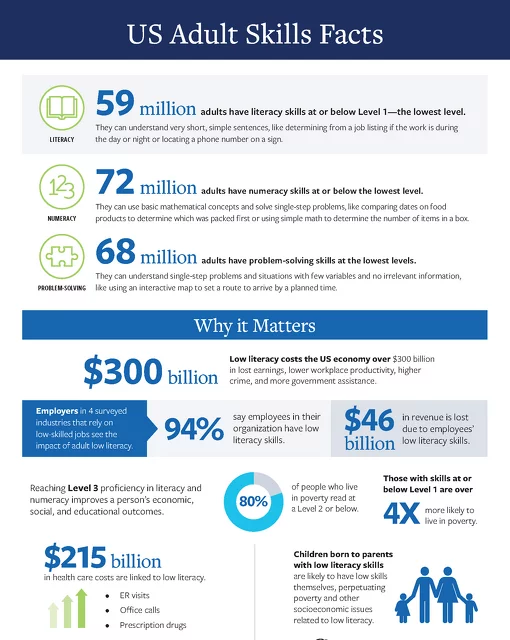Fact Sheet/Infographic
The Numbers Don’t Lie
This fact sheet highlights the issue of adult skills in the United States, where 59 million adults read at or below the lowest levels.
Only a small percentage of those in need receive services, and many programs have waiting lists due to high demand.
Low literacy levels are associated with lower earnings, higher poverty rates, and increased health care costs. The importance of adult education as a solution is emphasized.
The fact sheet also touches on the education and language skills of newcomers to the US.
Click the link below to watch and share the full series highlighting the critical role literacy plays in one’s ability to navigate the world around them.
International Fact Sheet
UNESCO data shows that throughout the world, nearly 800 million people cannot read, the majority of whom are women. This fact sheet provides some basic statistics about literacy worldwide.
